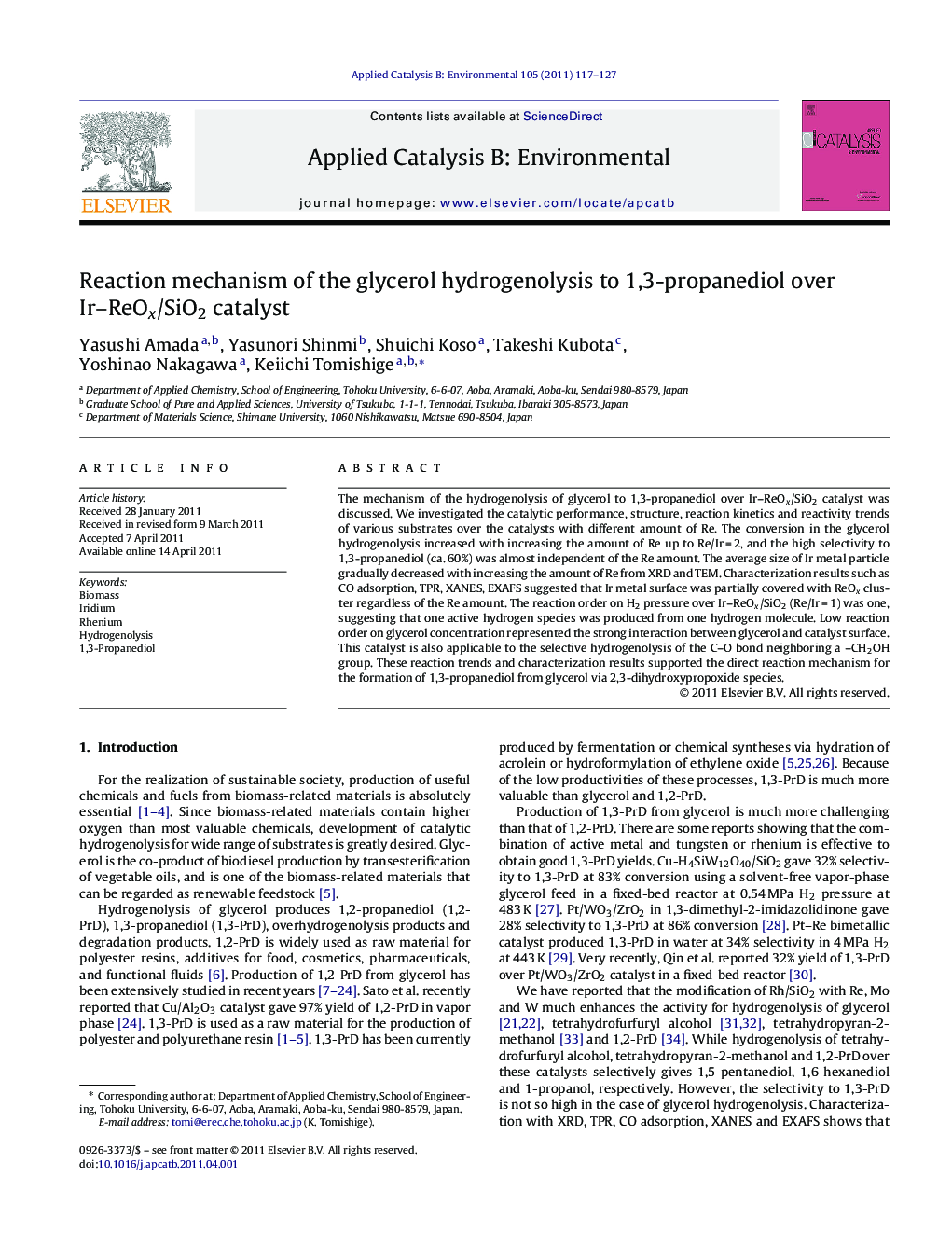| کد مقاله | کد نشریه | سال انتشار | مقاله انگلیسی | نسخه تمام متن |
|---|---|---|---|---|
| 46799 | 46449 | 2011 | 11 صفحه PDF | دانلود رایگان |

The mechanism of the hydrogenolysis of glycerol to 1,3-propanediol over Ir–ReOx/SiO2 catalyst was discussed. We investigated the catalytic performance, structure, reaction kinetics and reactivity trends of various substrates over the catalysts with different amount of Re. The conversion in the glycerol hydrogenolysis increased with increasing the amount of Re up to Re/Ir = 2, and the high selectivity to 1,3-propanediol (ca. 60%) was almost independent of the Re amount. The average size of Ir metal particle gradually decreased with increasing the amount of Re from XRD and TEM. Characterization results such as CO adsorption, TPR, XANES, EXAFS suggested that Ir metal surface was partially covered with ReOx cluster regardless of the Re amount. The reaction order on H2 pressure over Ir–ReOx/SiO2 (Re/Ir = 1) was one, suggesting that one active hydrogen species was produced from one hydrogen molecule. Low reaction order on glycerol concentration represented the strong interaction between glycerol and catalyst surface. This catalyst is also applicable to the selective hydrogenolysis of the C–O bond neighboring a –CH2OH group. These reaction trends and characterization results supported the direct reaction mechanism for the formation of 1,3-propanediol from glycerol via 2,3-dihydroxypropoxide species.
Figure optionsDownload as PowerPoint slideHighlights
► Glycerol hydrogenolysis over Ir–ReOx/SiO2 showed high selectivity to 1,3-propanediol.
► The active site may be the interface between Ir metal and ReOx cluster.
► Ir–ReOx/SiO2 selectively dissociated the C–O bond neighboring to –CH2OH group.
► 1,3-Propanediol is obtained via more stable 6-membered-ring transition state.
Journal: Applied Catalysis B: Environmental - Volume 105, Issues 1–2, 9 June 2011, Pages 117–127